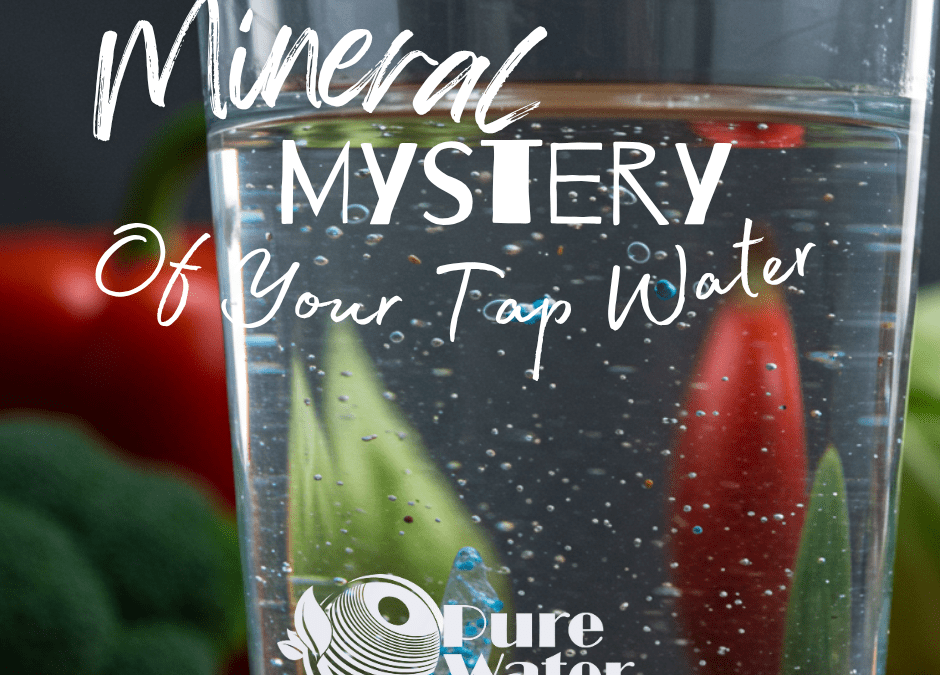
Water in Every Malaysian Heartbeat: How Pure Water Has Hydrated Our Culture for 30+ Years
25/07/2025
Beyond the Desk: Why a Thoughtful Office Transformation is Your Secret Weapon
29/09/2025
Mineral Mystery of tap water
Is Your Thirst for Health Truly Quenched?
We turn on the tap, fill a glass, and drink without a second thought. It’s clean, it’s convenient, and it’s free, right? But what if the very water we rely on for hydration is missing a crucial component, and perhaps even introducing hidden concerns? Let’s dive deeper into the intriguing, often misunderstood, world of tap water and its mineral content.
The Unseen Journey: How Your Tap Water Loses Its Sparkle
Your local water treatment plant is a marvel of modern engineering, designed to deliver safe, potable water. They use sophisticated processes like coagulation, flocculation, sedimentation, and filtration to remove dirt, particles, and harmful microorganisms. Then comes the disinfection, often with chlorine, a chemical that famously ensures water safety as it travels through miles of pipes. (Did you know chlorination became widespread after 1908 and dramatically reduced waterborne diseases like typhoid? It was a game-changer!)
However, here’s the twist: many of these essential purification steps, especially modern membrane methods like reverse osmosis (RO) and nanofiltration, effectively remove not just contaminants but also a significant portion of the inorganic minerals naturally present in raw water. Think of it like stripping the water bare. While these processes are crucial for safety, they can leave your water surprisingly “empty.”
Organic vs. Inorganic: Why Not All Minerals Are Created Equal
Your existing blog post rightly highlights a critical distinction: the human body is inherently designed to absorb organic minerals. These are the minerals found bountifully in the vibrant fruits, crisp vegetables, and wholesome grains we eat – they’ve been “processed” by nature, making them easily bioavailable.
Inorganic minerals, the kind found in rocks and, yes, some tap water, are a different story. While water can dissolve minerals like calcium and magnesium from the earth, our bodies struggle to properly assimilate them. Studies suggest that a long-term diet of water very low in essential minerals might even be linked to adverse health effects, including potential impacts on cardiovascular health and bone development in children. The World Health Organization (WHO) acknowledges that drinking water can contribute to our intake of minerals like calcium and magnesium, especially for those whose diets are already lacking. But is it enough?
The Hidden Invader: Microplastics in Your Glass
Beyond the mineral debate, there’s another unsettling truth. Recent global research has revealed that microplastics are now pervasive in tap water supplies worldwide. These tiny plastic particles, shed from everyday items, are so minute that many conventional filters struggle to catch them. It’s a modern mystery hiding in plain sight, adding another layer of complexity to water purity.
Reclaiming Your Water’s Potential
So, what’s a health-conscious individual to do? Relying solely on tap water for your mineral intake is like expecting a houseplant to thrive on moonlight – it might survive, but it won’t flourish. The most effective strategy for essential minerals remains a balanced, nutrient-rich diet.
For your drinking water, however, consider taking control:
- Water Purifiers: Systems utilizing advanced filtration like activated carbon and reverse osmosis are highly effective at removing a vast array of contaminants, including those elusive microplastics and excess inorganic minerals that your body might not utilize efficiently. Explore our range of water purification systems at purewater.com.my.
- Water Distillers: For the purest form of H2O, distillation boils water into steam, then condenses it back into liquid. This process effectively leaves behind virtually all impurities, including minerals (both inorganic and organic if they were present), chemicals, and microplastics. Discover the benefits of water distillers at purewater.com.my.
The “mineral mystery” isn’t about shunning tap water for its safety (thanks to those diligent treatment plants!). It’s about empowering yourself with knowledge. By understanding what’s really in your water and prioritizing a diverse diet, you can ensure your body gets all the vital nutrients it needs to thrive. Ready to take the next step in ensuring your water quality? Visit purewater.com.my to learn more about our solutions.



